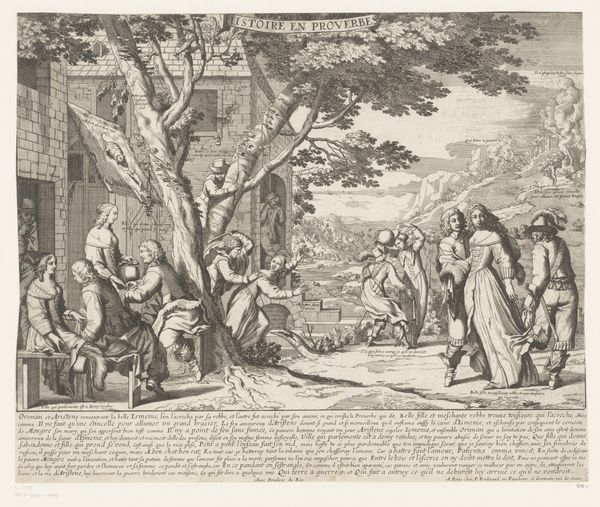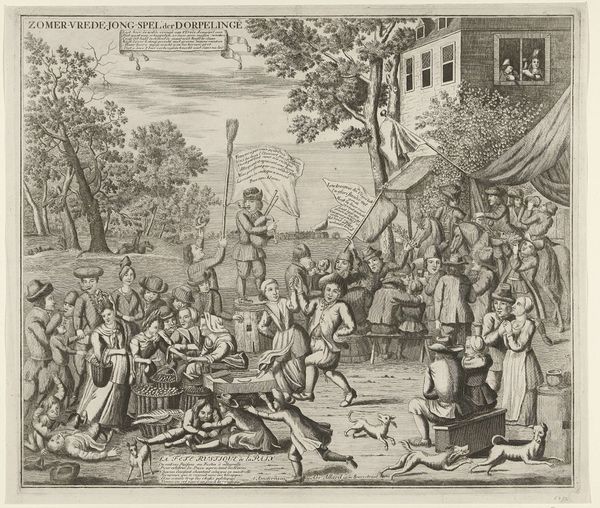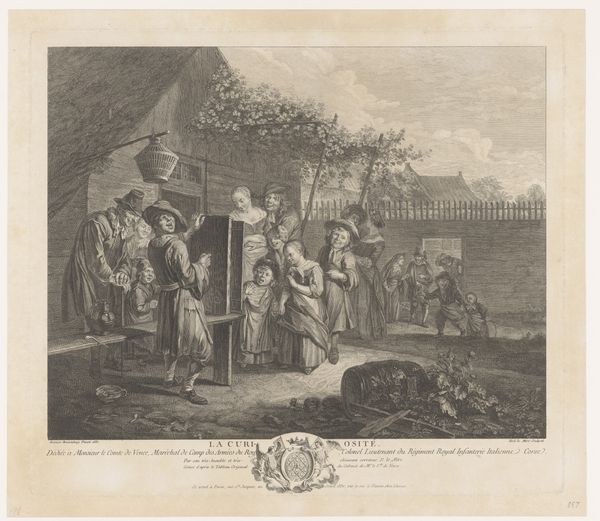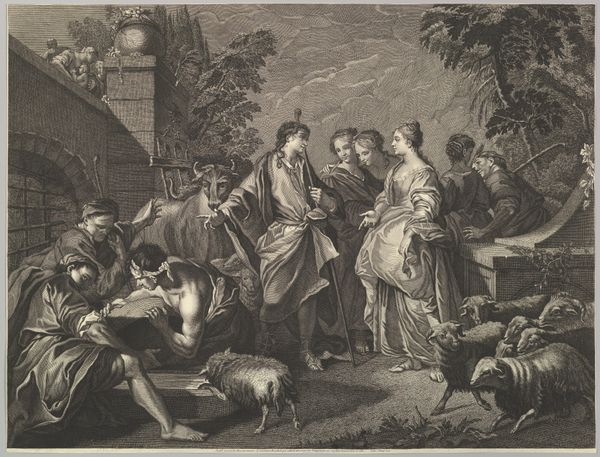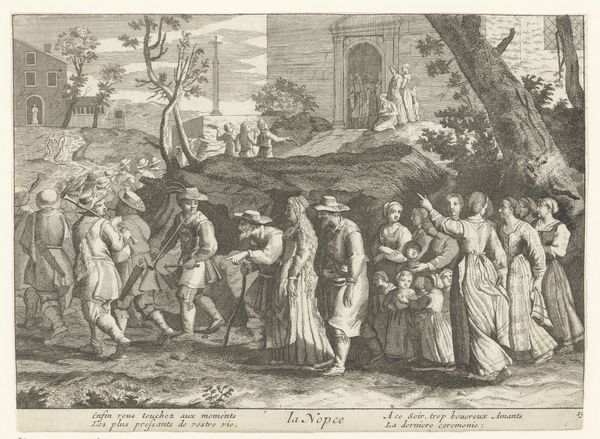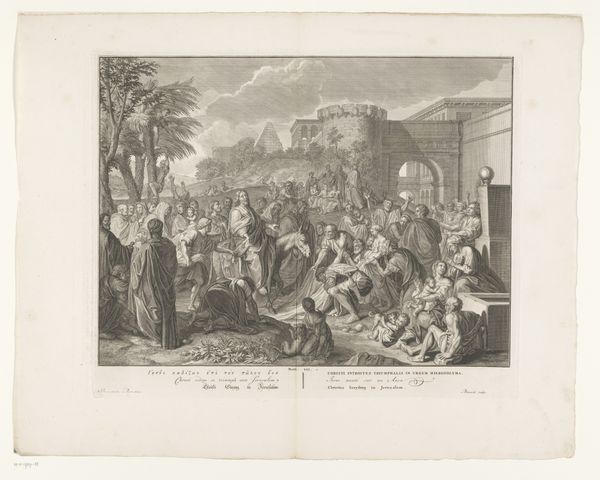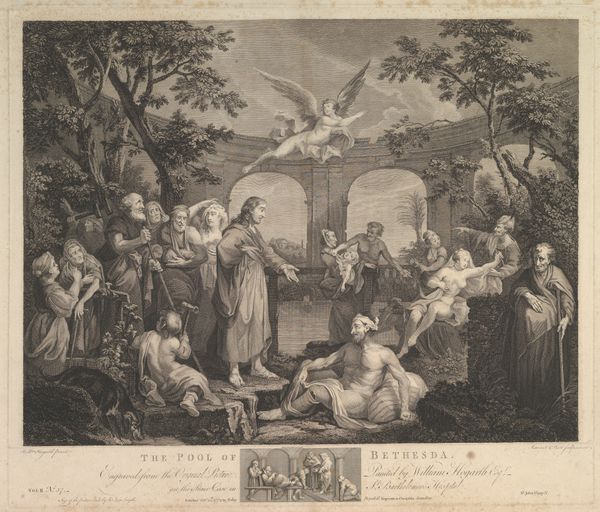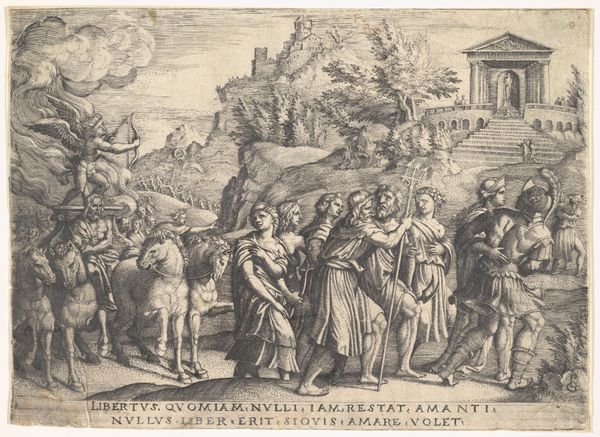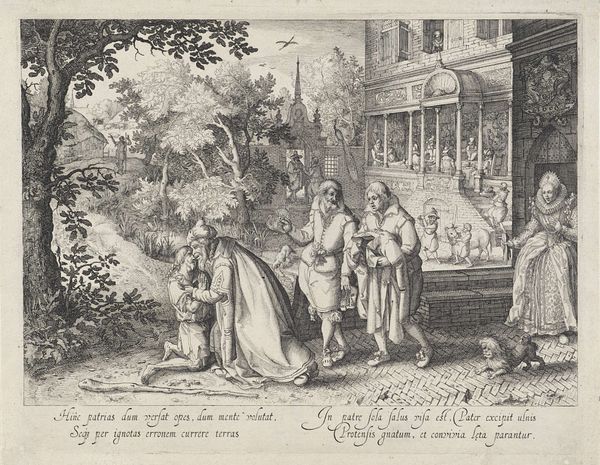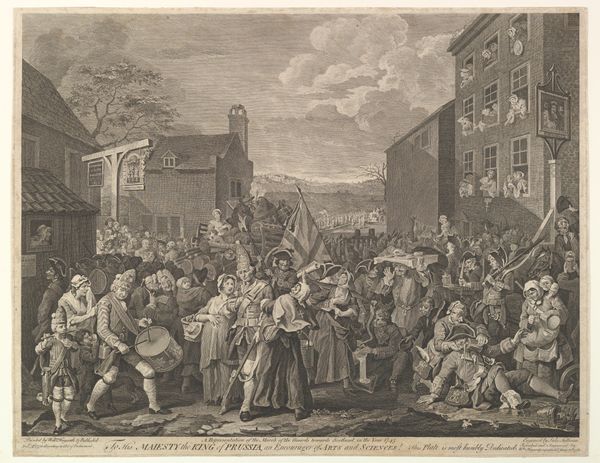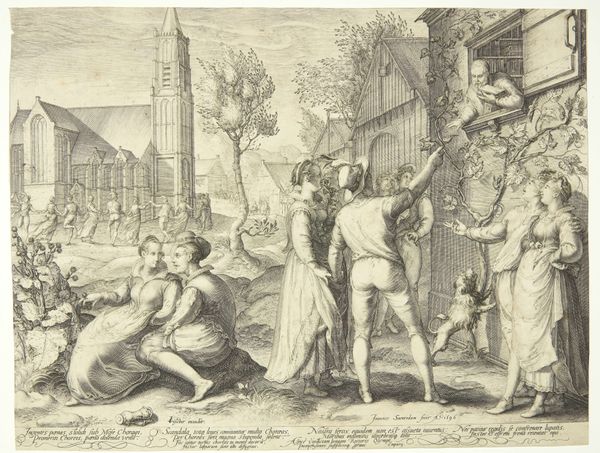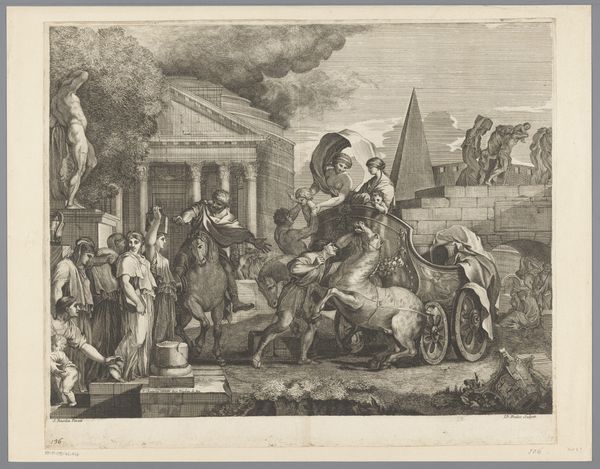
print, engraving
#
narrative-art
#
baroque
# print
#
old engraving style
#
classical-realism
#
figuration
#
line
#
genre-painting
#
engraving
Dimensions: height 234 mm, width 314 mm
Copyright: Rijks Museum: Open Domain
Curator: What a vibrant scene! The Rijksmuseum holds this anonymous engraving, "Sancho Panza doet op een markt inkopen," created sometime between 1670 and 1742. The baroque style brings a great sense of theater to the everyday. Editor: It has an incredibly detailed tableau. I am immediately drawn in by the figures seemingly in the middle of some vibrant communal feast, set against the backdrop of these quaint, almost sterile-looking houses. It seems almost chaotic and unsettling with that strange tent on the left. Curator: You know, the figure of Sancho Panza himself represents a lot of conflicting cultural symbols: the loyal servant versus the hedonistic peasant, grounded pragmatism contrasting with fantastical idealism. It brings to life many narrative threads. Editor: Absolutely, the division between leisure and labor strikes me— the central tension I think is that dichotomy within Sancho, caught between obligation to his master and desire for basic satisfaction of taste and belonging. Are these images of joy and leisure ultimately aspirational fantasies or mocking assertions? The social dynamics seem ripe for interrogation! Curator: This engraving clearly stems from genre painting traditions, taking scenes of daily life and using them to explore social relationships. But note, how different groups form across this composition; each group offers a subtle commentary on societal harmony— or perhaps disharmony. Editor: It certainly makes you think about historical marketplaces, hubs of exchange, not only commodities but gossip, alliances, class friction, even revolts and conspiracies… these bustling spaces created both social order and disorder. Perhaps Sancho's experience at market, therefore, is a metanarrative regarding larger class dynamics within this older Dutch society? Curator: That interpretation connects this to much larger themes surrounding early European history, bringing together considerations of the market, family life, the class divides, as presented in a baroque and classical realist styles. These archetypes appear consistently. Editor: Right, analyzing works such as this from multiple lenses gives the work contemporary resonance— it’s about more than Don Quixote fan fiction. Curator: Agreed. Delving into iconography reveals so much history. Editor: And critically deconstructing such imagery gives clues on what to resist going forward.
Comments
No comments
Be the first to comment and join the conversation on the ultimate creative platform.
